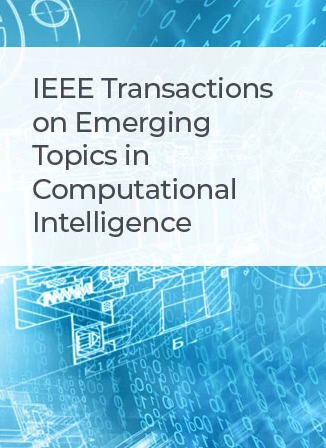Privacy-Preserving Learning Model Using Lightweight Encryption for Visual Sensing Industrial IoT Devices
IF 5.3
3区 计算机科学
Q1 COMPUTER SCIENCE, ARTIFICIAL INTELLIGENCE
IEEE Transactions on Emerging Topics in Computational Intelligence
Pub Date : 2025-01-08
DOI:10.1109/TETCI.2024.3523771
引用次数: 0
Abstract
Technological convergence in visual sensing with industrial IoT (VSI-IoT) can bring numerous advances to large-scale crowd management systems like visual crowdsensing. VSI-IoT has significant features, including sensing, computing, analyzing, and storing, to address the issues of bearing failures, such as unplanned outages, increased downtime, and reduced operational efficiency. By contrast, providing privacy to the IIoT environments is a challenging task. Thus, this paper presents a novel privacy-preserving learning (PPL) mechanism that senses the defect rate of bearing failures using lightweight model aggregation at edge computing systems to preserve the privacy features. This convergence model synthesizes shape features comprehensively to transform the feature vectors into predictive functions that examine the categorization models using a two-dimensional convolution neural network (2D-CNN). Using security analysis, we demonstrate that the proposed PPL can achieve better privacy protection and model accuracy to preserve the learning features without additional verifiability. Further, the examination results showed that the proposed 2D-CNN with BN and LN consumed less computation complexity to achieve better detection accuracy基于轻量级加密的视觉传感工业物联网设备隐私保护学习模型
视觉传感与工业物联网(VSI-IoT)的技术融合可以为视觉人群传感等大规模人群管理系统带来许多进步。VSI-IoT具有重要的功能,包括传感、计算、分析和存储,以解决轴承故障问题,如计划外停机、停机时间增加和运行效率降低。相比之下,为工业物联网环境提供隐私是一项具有挑战性的任务。因此,本文提出了一种新的隐私保护学习(PPL)机制,该机制在边缘计算系统中使用轻量级模型聚合来感知轴承故障的缺陷率,以保持隐私特征。该收敛模型综合了形状特征,将特征向量转换为使用二维卷积神经网络(2D-CNN)检查分类模型的预测函数。通过安全性分析,我们证明了所提出的PPL可以实现更好的隐私保护和模型准确性,以保留学习特征,而无需额外的可验证性。此外,测试结果表明,与其他最先进的方法相比,提出的具有BN和LN的2D-CNN在三个轴承数据集(即IMS-Rexnord, CWRU和Paderborn)上实现更好的检测精度$ $(约87.91.9% $ $至约99.98% $ $)和通信成本$ $(约21.99 mb $至23.92MB $ $)的计算复杂度更低。最重要的是,基于隐私保护的AlexNet是使用CryptoNet和LoLa实现的,以显示不同的效率集,如处理时间、隐私和完整性检查,以在时间敏感的应用场景(如供应链优化)下保持系统性能。
本文章由计算机程序翻译,如有差异,请以英文原文为准。
求助全文
约1分钟内获得全文
求助全文
来源期刊

IEEE Transactions on Emerging Topics in Computational Intelligence
Mathematics-Control and Optimization
CiteScore
10.30
自引率
7.50%
发文量
147
期刊介绍:
The IEEE Transactions on Emerging Topics in Computational Intelligence (TETCI) publishes original articles on emerging aspects of computational intelligence, including theory, applications, and surveys.
TETCI is an electronics only publication. TETCI publishes six issues per year.
Authors are encouraged to submit manuscripts in any emerging topic in computational intelligence, especially nature-inspired computing topics not covered by other IEEE Computational Intelligence Society journals. A few such illustrative examples are glial cell networks, computational neuroscience, Brain Computer Interface, ambient intelligence, non-fuzzy computing with words, artificial life, cultural learning, artificial endocrine networks, social reasoning, artificial hormone networks, computational intelligence for the IoT and Smart-X technologies.
 求助内容:
求助内容: 应助结果提醒方式:
应助结果提醒方式:


